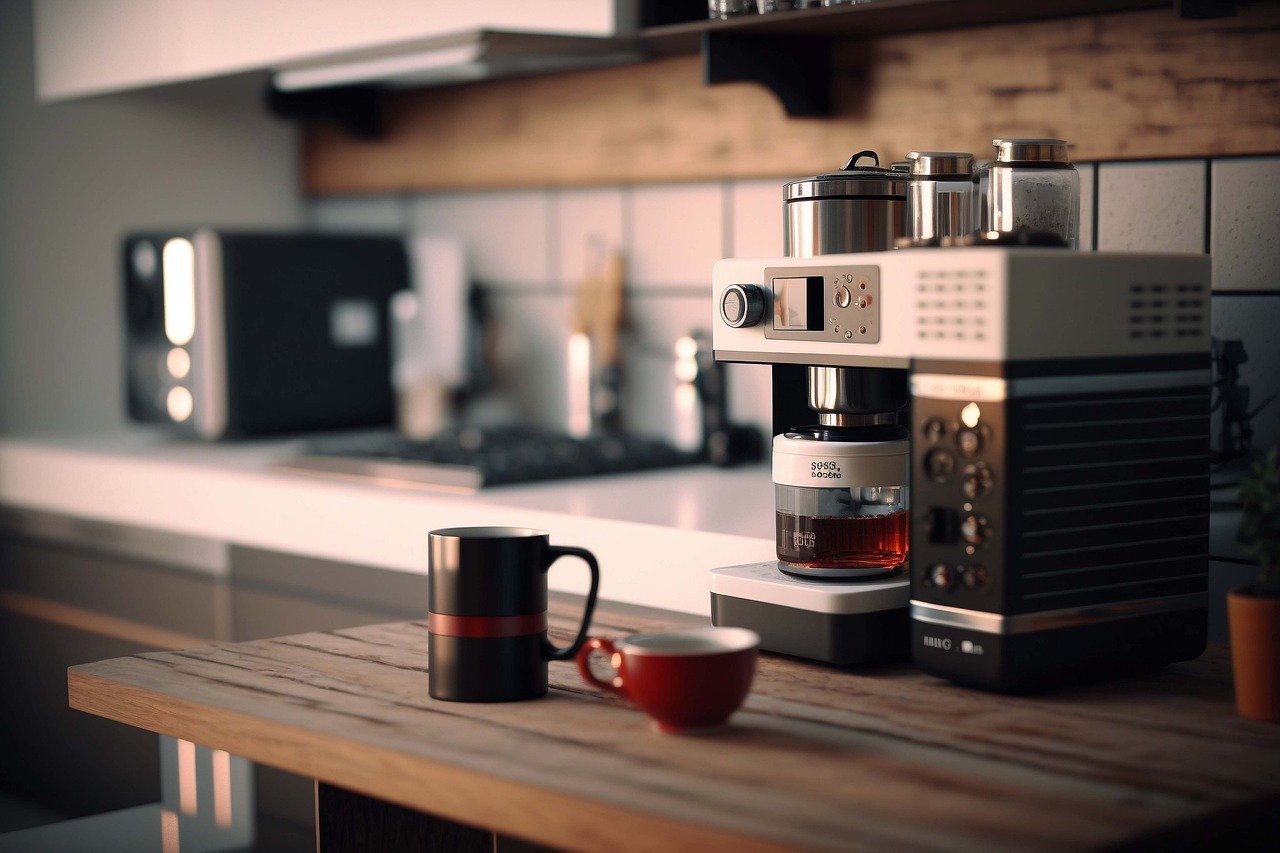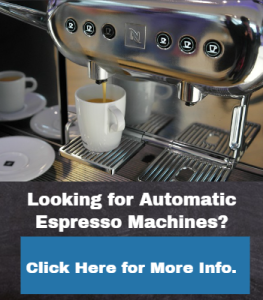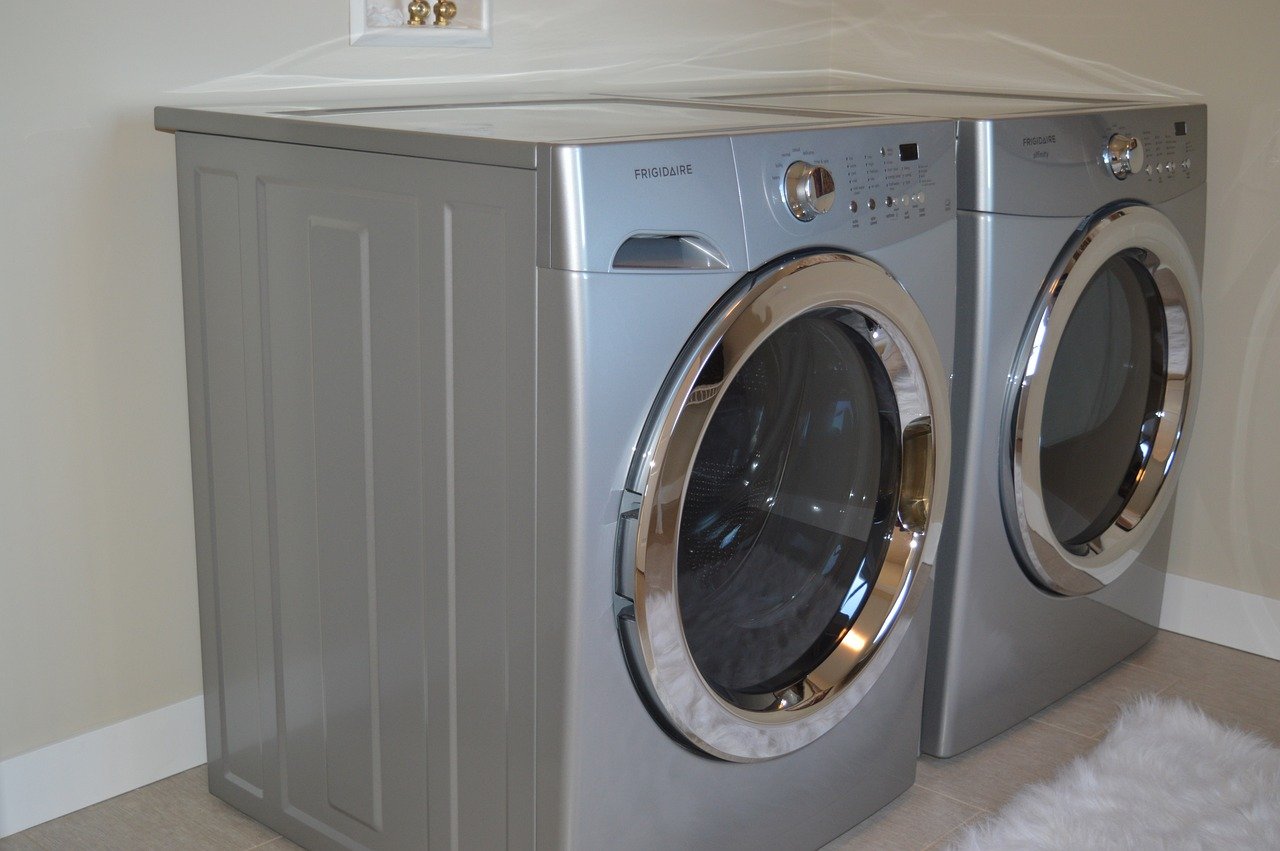
It’s widely recognized that Americans have a deep love for coffee, and the quality of our brew matters significantly. This is where a home coffee machine plays a crucial role.
The coffee machine market offers a variety of espresso machine types, each with its unique advantages and drawbacks, catering to different coffee-making preferences. In this discussion, we delve into the considerations that lead you to select one coffee machine over another, explore valuable features, delve into pricing expectations, and much more.
The age-old debate of automatic or manual machines, the convenience of pods or capsules – our comprehensive guide, crafted by experts, will assist you in making the perfect choice for your coffee needs.
Capsule Coffee Machine
Pod or capsule coffee machines make up the majority of espresso machines purchased in the United States. These machines use coffee capsules that are typically similar in size and shape to single-serve UHT milk containers. The capsules are sealed in either aluminum or plastic, ensuring the coffee stays fresh for approximately nine months.
 It’s worth noting that there are also Easy Serving Espresso (ESE) pods, which are essentially coffee discs compressed between layers of filter paper (distinct from coffee capsule pods). ESE pods lack the hermetic sealing found in capsules. Some coffee machines are versatile, accommodating both pods and ground coffee by providing separate filter baskets and, in some cases, different shower heads for each.
It’s worth noting that there are also Easy Serving Espresso (ESE) pods, which are essentially coffee discs compressed between layers of filter paper (distinct from coffee capsule pods). ESE pods lack the hermetic sealing found in capsules. Some coffee machines are versatile, accommodating both pods and ground coffee by providing separate filter baskets and, in some cases, different shower heads for each.
One of the most prominent brands in the capsule machine market is Nespresso. Nespresso machines offer a variety of capsule styles based on whether you’re using an ‘original’ type of machine or their newer Vertuo models, designed for various cup sizes and exclusively compatible with ‘official’ Nespresso capsules. The prices of these capsules can fluctuate.
When it comes to the machines themselves, some come equipped with a built-in milk frother, while others require a separate purchase for this accessory. Some pod machines don’t necessitate a frother at all and use separate milk capsules, although these may not offer the best quality milk in our tests.
Using a pod machine is straightforward: you insert a coffee pod or capsule, which the machine then punctures to allow hot water to flow through and extract the coffee shot.
Pod machines come in different price ranges, alongside the ongoing pod costs. Our tests confirm good home coffee doesn’t require a fortune.
Pros:
- Exceptionally user-friendly and convenient.
- A wide range of coffee flavors is available.
- Minimal cleanup is required.
- Compact and space-efficient, taking up minimal benchtop space.
Cons:
- Coffee enthusiasts may find that coffees from these machines lack depth or flavor intensity.
- Recycling aluminum-based capsules can be challenging and often results in them ending up in landfills, which is wasteful in terms of energy and materials.
- In the long run, they can be more expensive to use than freshly ground coffee but still more cost-effective than purchasing coffee at a cafe every morning.
Automatic Espresso Machines
Automatic espresso machines are an increasingly popular choice, with prominent brands such as DeLonghi, Gaggia, Jura, Melitta, and Miele leading the way. While many individuals favor manual models or opt for the convenience and cost savings of capsule coffee machines, automatic espresso machines have their own devoted following and can be highly practical in small office kitchens or busy households.
 Using an automatic coffee machine is straightforward: place your cup under the spout, press a button to grind the coffee beans for your espresso, and customize your beverage based on your preferred strength and volume. Some models even have the added convenience of automatically frothing milk for cappuccinos or lattes.
Using an automatic coffee machine is straightforward: place your cup under the spout, press a button to grind the coffee beans for your espresso, and customize your beverage based on your preferred strength and volume. Some models even have the added convenience of automatically frothing milk for cappuccinos or lattes.
In terms of cost, automatic coffee machines can be a significant investment.
Pros:
- Easier to use compared to semi-automatic and manual coffee machines.
- They use freshly ground coffee beans instead of capsules, allowing you to control the grind to your liking.
- Many models offer the option to save multiple coffee programs or user profiles, and some are compatible with apps and smart home hubs.
- Some include ‘self-cleaning’ modes, reducing the hassle of cleaning and descaling the machine, though regular maintenance remains essential. Many will also notify you when cleaning is required.
Cons:
- Often more expensive than other types of coffee machines, and a higher price doesn’t always guarantee superior coffee quality.
- They can be quite heavy, weighing between 7.5kg and 15kg.
- The depth of the machine can exceed 40cm, requiring sufficient counter space.
- Despite being ‘automatic,’ certain components still need regular cleaning and maintenance, especially the milk container and associated pipes, drip tray, coffee grounds container, and water tank.
- Depending on your area’s water hardness, descaling may be necessary, and some manufacturers recommend using water filters, which can add to the overall expense.
- While some customization is possible regarding strength, temperature, and grind, you generally have less control compared to a dedicated grinder combined with a manual espresso machine.
Manual Coffee Machines
Manual espresso machines offer a hands-on coffee-making experience, allowing you to experiment and gain a deeper understanding of the art of coffee. They demand more knowledge and practice, particularly in aspects such as grinding, dosing, and tamping.
Prominent brands in this category include Breville, DeLonghi, Gaggia, Lelit, Profitec, Rancilio, Sunbeam, and Smeg. Typically, using a manual coffee machine necessitates a separate bean grinder, which is an additional cost, but these machines often come with milk frothing capabilities.
The space required on your countertop for manual coffee machines can vary depending on the machine’s complexity and design, but they generally measure between 20 and 40cm in width. The weight of these machines can range from around 3kg to 19kg.
To use a manual espresso machine, you manually place the desired amount of ground coffee into the group head and then initiate the brewing process. Unlike a semi-automatic machine, you’ll need to control and stop the flow of coffee yourself.
In terms of cost, manual coffee machines can be quite affordable, starting at around $90, and go up to prices exceeding $4500.
Pros:
- Enhanced depth of flavor achieved through the use of fresh coffee.
- The satisfaction of crafting your own cup of coffee precisely to your taste.
- These machines often have an aesthetic appeal and can add a touch of style to your kitchen, even budget options from brands like Kmart can have a retro charm.
Cons:
- Not recommended for beginners without prior coffee-making experience.
- Ground coffee needs to be prepared before each use, which can be time-consuming.
- Regular maintenance is essential to keep the machine in good working condition.
Semi-Automatic Espresso Machines
Semi-automatic espresso machines provide a balance between manual and fully-automatic machines. They operate much like a manual machine but offer the convenience of automatically cutting off the coffee flow once a predetermined amount has been poured into your cup, a task typically done manually with traditional machines.
Pros:
- Versatility – offers a blend of control over your coffee while eliminating the need to manually stop the flow.
- More cost-effective than fully-automatic coffee machines.
Cons:
- Similar to manual machines, there is still a learning curve and experimentation process involved.
- Ongoing maintenance is essential to ensure the machine’s optimal performance.
Essential Coffee Machine Features Every User Should Consider
When choosing a coffee machine, consider the following key features to find the best fit for your needs:
- Brewing Method: Decide on the type of coffee you prefer, whether it’s espresso, drip coffee, French press, or a combination. Choose a machine that supports your preferred brewing method.
- Capacity: Determine how many cups of coffee you need to brew at once. Coffee machines come in various sizes, from single-cup to large-capacity models.
- Grinder: If you use whole coffee beans, opt for a machine with a built-in grinder for freshly ground coffee. Some machines have adjustable grind settings.
- Programmability: Look for machines with programmable timers or settings, so you can have your coffee ready when you wake up or arrive home.
- Milk Frothing: If you enjoy milk-based drinks like lattes and cappuccinos, consider a machine with a milk frother or steamer.
- Water Filtration: Machines with built-in water filters can improve the taste of your coffee by removing impurities from the water.
- Temperature Control: Temperature is crucial for coffee flavor. Select a machine that allows you to control or monitor the water temperature.
- Brew Strength Control: Some machines offer options to adjust the strength of your coffee, giving you a more personalized brewing experience.
- Size and Space: Consider the dimensions of the machine and ensure it fits your kitchen counter or designated space.
- Ease of Cleaning: Look for machines with removable parts that are easy to clean. Some have self-cleaning features.
- Carafe Type: For drip coffee makers, choose between glass and thermal carafes. Thermal carafes keep coffee hot without a hot plate.
- Filter Type: Drip coffee makers may use paper filters or permanent metal filters. Decide which type you prefer.
- Single Serve vs. Multi-Cup: Single-serve machines are convenient for individuals, while multi-cup machines are ideal for households or offices.
- Customization: Some machines allow you to customize coffee size, strength, and other settings for a tailored coffee experience.
- Price: Set a budget and look for a machine that offers the features you need within that price range.
- Brand and Reputation: Research reputable brands known for quality and customer support.
- Warranty: Examine the warranty conditions to confirm your protection in the event of any problems.
- User Reviews: Read user reviews and ratings to get insights into the real-world performance and durability of the machine.
- Energy Efficiency: Look for machines with energy-saving features to reduce power consumption.
- Noise Level: Take into account the machine’s potential noise, particularly if you intend to use it in the early morning, as some machines can be rather loud when in operation.
By considering these features, you can find a coffee machine that aligns with your coffee preferences and lifestyle.


 Amazon.com
Amazon.com





















































